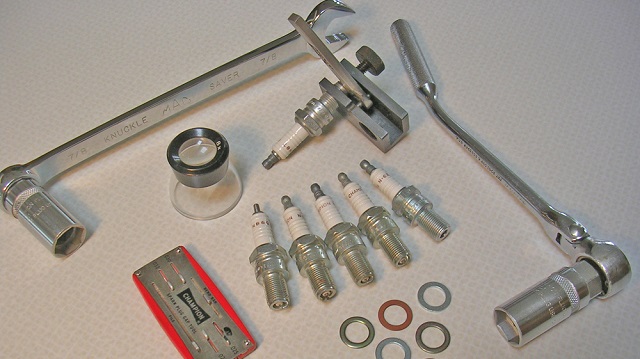
Last issue, we talked about the heat “rating” or heat range of the spark plug, and what it really means. This time around, we’ll show you where to begin when selecting plugs. Honestly, there are no set and fast rules as you’ll soon see. Check it out:
In order to select the right heat range for your engine, it’s best to use a “safe” selection process. Start with a set of spark plugs that are too cold and work your way up until fouling stops. Use a spark plug that is several heat ranges colder than specified in a common factory shop manual for your vehicle. According to the folks at MSD Ignition the tip temperature of the spark plug must stay lower than the normal pre-ignition temperature of approximately 1400 degrees F. In addition, the tip temperature must remain hot enough to keep from oil or carbon fouling. This requires a temperature of approximately 800 degrees F. MSD feels that you should try to use the hottest tip temperature that will “live” in the power plant without creating any spark plug induced problems (i.e.: detonation). A projected nose spark plug is preferred if it will clear the piston dome.

Projected nose spark plugs are preferred for several reasons, but perhaps the most important is the plug’s capability of acting like a hot spark plug at low RPM levels and then cooling off and acting like a cold plug at high engine RPM levels. The projected nose spark plug is cooled by the incoming air-fuel charge which effectively blows by the extended spark plug tip. At low engine speeds, the increased insulator length improves the spark plug temperature characteristics — allowing the plug to burn cleanly without fouling. Further to this, the projected nose helps to place the spark plug in a well-suited position to initiate the ignition process.

The use of modern day high-powered ignition systems such as computer ignitions, multiple-spark ignitions, and many electronic systems also creates problems with spark plug selection. But not in the way you might first imagine. High quality, high power ignition systems produce relatively large amounts of coil current. Because of this, the spark plug condition is not as critical as it once was (in the days of single and dual point distributors). While the spark plug condition is less critical, it doesn’t mean that the spark plugs are “set and forget” components. Reading of the plugs with these ignition systems is certainly more difficult, but it isn’t impossible.

Many racers have made the switch from a conventional ignition system to a high-powered system of some sort and then claim that the spark plugs are reading lean. Think about this for one minute. The air-fuel mixture hasn’t been changed. How in the world can the ignition system affect the air-fuel mixture? It can’t, but because of the better burning properties of a modern ignition setup, changes may be required in the air-fuel mixture.
So why are the spark plugs so “clean”? Because the ignition system is efficient. Next issue, we’ll provide you with some insight into reading plugs, particularly when used in conjunction with a contemporary ignition system. Watch for it!



Leave a Reply